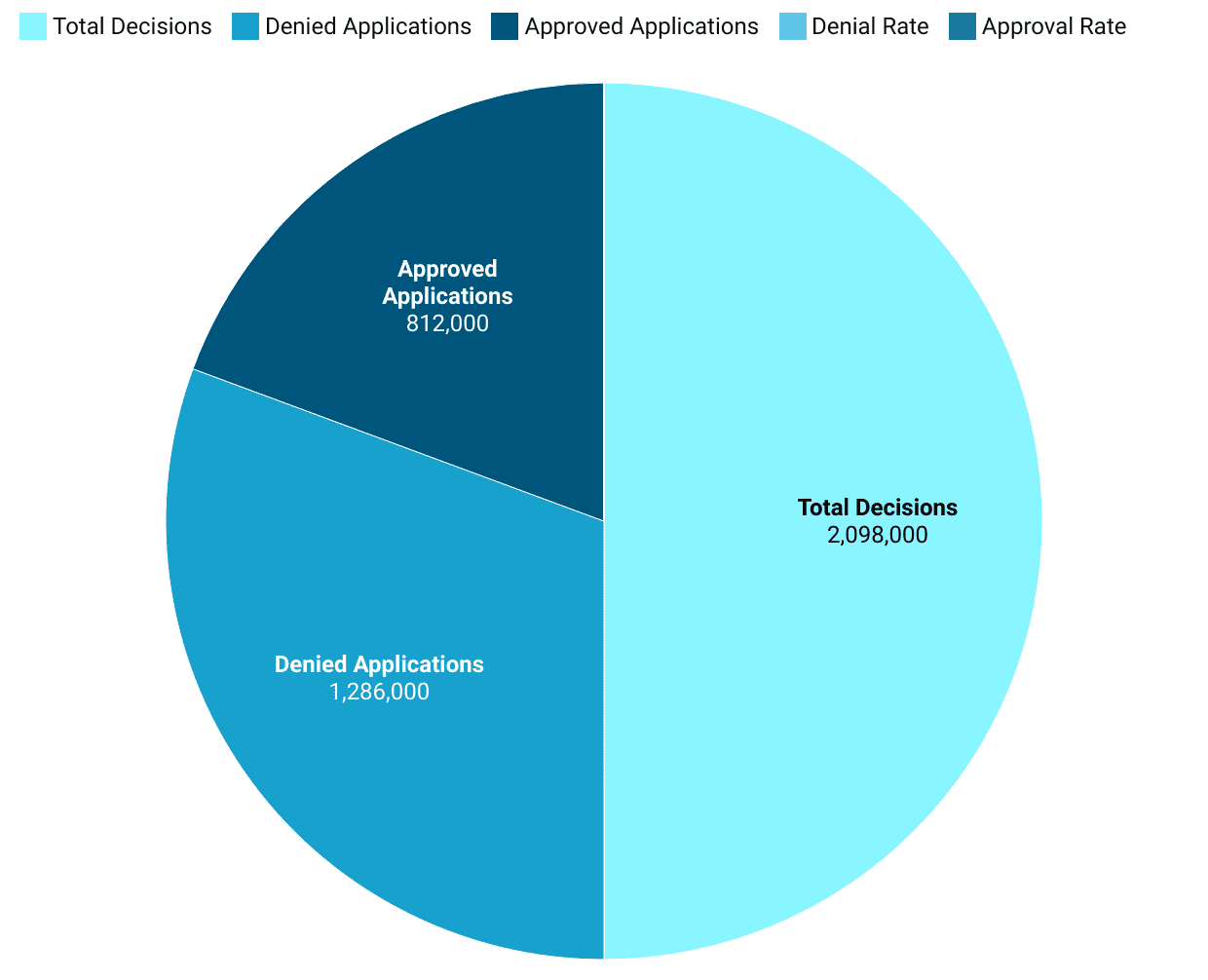| The SSA evaluates the combined impact of all your physical and mental health conditions through “medical equivalence.” Document each condition, explain their interactions, and gather medical records.
Have your doctor complete an RFC form to strengthen your claim. Avoid common mistakes like omitting minor conditions, missing deadlines, or using vague language. Seeking help from a lawyer or support resources can significantly improve your chances of approval. |
Yes, now imagine, you wake up exhausted — not just from insomnia, but because your back pain kept you tossing all night. By noon, your anxiety is spiking because your back pain makes it impossible to sit through a full workday.
You’re told, “None of your conditions alone are bad enough.” But you know — together, they’ve stolen your ability to do daily work.
You’re right. And the law agrees with you.
The SSA looks at all your health conditions together, not one by one, to see how they affect your ability to work — even if each condition alone isn’t severe.
This is called “medical equivalence” — and it’s the key to unlocking your benefits.
Why Multiple Conditions Can Strengthen Your Case (If You Use Them Right)
The Social Security Administration (SSA) evaluates the overall impact of all your conditions—both physical and mental—rather than assessing each impairment individually.
This rule is called medical equivalence. Think of it like this:
- One cracked beam won’t collapse a house.
- But add water damage, termites, and a shifting foundation? The home becomes unstable.
That’s how multiple health conditions, working together, can make full-time work impossible.
For Example:
Diabetes + Neuropathy + Depression
None of these alone may meet a Blue Book listing. But together? The nerve pain makes standing unbearable, the depression kills your focus, and the fatigue from blood sugar swings means you can’t complete an 8-hour workday. That combination is disabling.
Top Conditions and Their Overlap
Many people don’t realize how much overlap counts in disability claims. Here are some of the most common pairings that often win Social Security Disability Insurance (SSDI) or SSI benefits:
| Condition | Approval Rate | Why It Often Pairs with Others |
| Musculoskeletal Disorders (e.g., arthritis, back pain) | ~30% (initial allowance) | Most common category (34% of beneficiaries); overlaps with mental health due to chronic pain. |
| Mental Illnesses (e.g., depression, anxiety) | ~25% (initial allowance for mood disorders) | Frequently co-occurs with physical issues, amplifying work limitations. |
| Multiple Sclerosis | ~70% (overall allowance) | High approval; combines neurological and physical effects. |
| Cancer | >80% (initial allowance for neoplastic impairments) | Post-treatment fatigue pairs with other chronic conditions. |
These aren’t isolated—Musculoskeletal issues alone account for the bulk of approvals, but when layered with respiratory or heart problems, the cumulative drag on your Residual Functional Capacity (RFC) becomes undeniable.
Step 1: Report Every Condition—No Detail Too Small
Many applicants make the mistake of only reporting their “worst” issue, but it’s important to list all conditions, as the SSA considers the combined effect of all your impairments.
- Physical diagnoses: back pain, diabetes, COPD, arthritis, etc.
- Mental health issues: anxiety, depression, PTSD, ADHD.
- Secondary effects: migraines, fatigue, medication side effects.
Pro Tip: Gather medical records that show how your conditions interact. For example, if depression makes it harder to manage diabetes, make sure to mention it.
Step 2: Show How Your Conditions Work Together: RFC and Blue Book Match
When you have multiple health conditions, your RFC decreases more quickly—like reduced lifting due to back pain, combined with focus issues from ADHD. If your RFC doesn’t match any job, you can qualify through the medical-vocational grid.
Even if your condition doesn’t directly match the SSA’s Blue Book, the combined effects of your conditions can still qualify you.
For instance, COPD on its own might not qualify, but adding obesity and heart disease could make it similar to a listed respiratory disorder. In 2025, the SSA added 13 new conditions to its Compassionate Allowances list, bringing the total to 300, many of which involve multiple health issues.
Step 3: Which Program Fits if You Have Multiple Conditions
- SSDI: For those with a work history (40 credits, roughly 10 years). Average monthly benefit in 2025: ~$1,500 after 2.5% COLA; max $4,018. Logic: It’s insurance you “paid into,” so no income test.
- SSI: Needs-based for low-income folks; max $967/month in 2025. Great if SSDI falls short, but asset limits apply ($2,000 individual).
You can apply for both—many do, with SSDI offsetting SSI. In 2024, over 8.9 million received SSDI, with state variations in approvals from 30-50%.
Social Security Disability Decisions in FY 2024: 812K Approved, 1.29M Denied
Getting disability benefits isn’t easy. In 2024 alone, over 2 million people applied — but the majority were denied.

How To Strengthen Your Claim Right Now
- Make a full written list of all conditions and symptoms.
- Gather all of the medical records (specialists, therapists, hospital visits).
- Request your doctor to complete an RFP form bridging the dots.
- Be detailed and explain how one complication exacerbates another (e.g. anxiety exacerbates pain perception, insomnia exacerbates fatigue).
If you have been told that you do not qualify with one of the conditions alone, do not give up. You can even have a better case due to the combination of your health problems
Avoid These Mistakes
Applying for disability is tough — but many denials come from small, avoidable mistakes. Here’s how to stay on track:
Mistake 1: Leaving out “minor” conditions
List everything — migraines, insomnia, IBS. They add up.
Mistake 2: Not explaining how conditions interact
Be specific: “Depression makes my pain worse,” or “Anxiety makes it impossible to manage diabetes.”
Mistake 3: Missing appeal deadlines
You have 60 days. Set reminders on your phone and calendar.
Mistake 4: Using vague language
Skip “I’m tired.” Say: “I sleep 14 hours, still need naps, and can’t stay awake past 2 PM.”
Mistake 5: Going it alone
Over 80% of people with lawyers win. Many only get paid if you win (usually 25% of back pay, capped by law).
Conclusion
Your health struggles don’t exist in isolation — and the SSA recognises that. Even if one condition alone doesn’t qualify, the combined effects can be truly disabling. Don’t try to handle this alone. With the right help, you can connect the dots, tell your story clearly, and fight for the benefits you deserve. Call us today for a free consultation. Let’s prove your story matters — and get you the benefits you’ve earned.
Frequently Asked Questions (FAQs)
Can I get benefits if I have more than one medical condition?
Yes. The SSA will consider the combined effect of all your impairments on your ability to work.
What types of conditions qualify?
Physical disabilities, mental health disorders, chronic illnesses, and other impairments that significantly limit your work activity.
Do I need a lawyer to apply?
While not required, having an experienced disability attorney can greatly increase your chances of approval.
How long does approval take?
On average, a decision can take 3 to 6 months, but some cases take longer. Appeals can extend the timeline.
Are my family members eligible for benefits too?
Certain family members, such as spouses and children, may qualify for benefits based on your record once you are approved.
